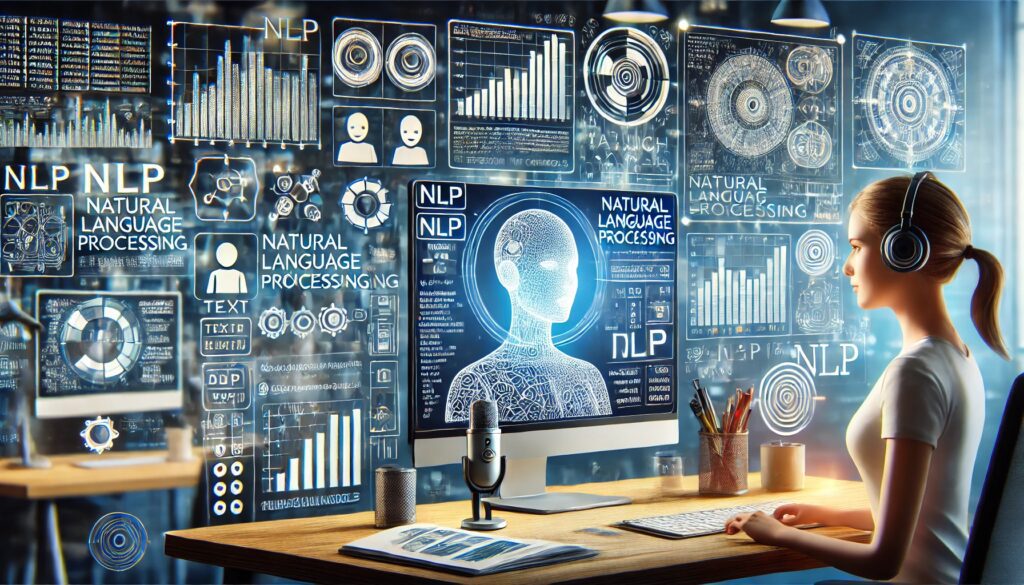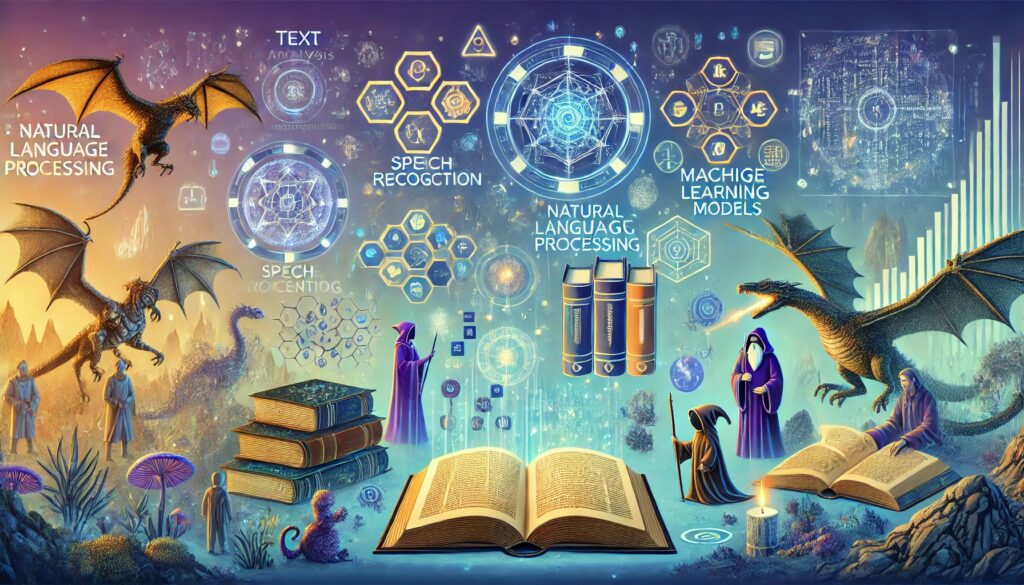
The Magic Behind NLP in AI
In the world of Artificial Intelligence (AI), one of the most intriguing and rapidly evolving fields is Natural Language Processing (NLP). This technology is transforming how machines understand and respond to human language. But what exactly is NLP, and why is it such a game-changer?
What is Natural Language Processing?
Natural Language Processing is a branch of AI that focuses on the interaction between computers and humans through natural language. Essentially, it enables machines to read, interpret, and generate human language in a way that is both meaningful and useful. Think of it as the brain behind chatbots, voice assistants, and even language translation apps.
How NLP Works
NLP combines computational linguistics—rule-based modeling of human language—with statistical, machine learning, and deep learning models. These technologies enable computers to process human language in the form of text or speech data and ‘understand’ its full meaning, complete with the speaker or writer’s intent and sentiment.
Key Components of NLP
Tokenization
One of the first steps in NLP is tokenization. This process breaks down a text into smaller pieces, or tokens, which can be words, phrases, or even whole sentences. By breaking the text into more manageable pieces, machines can analyze and understand it more effectively.
Sentiment Analysis
Sentiment analysis is another critical component. It involves determining the emotional tone behind a body of text. This can be incredibly useful for businesses looking to understand customer feedback or social media sentiment.
Named Entity Recognition (NER)
Named Entity Recognition helps identify and classify key information (entities) in a text. For example, it can recognize names of people, organizations, locations, and other proper nouns. This is vital for applications like information retrieval and question-answering systems.
Part-of-Speech Tagging
Part-of-Speech (POS) Tagging involves labeling words in a text with their corresponding parts of speech, such as nouns, verbs, adjectives, etc. This helps in understanding the grammatical structure of a sentence and is essential for more advanced NLP tasks like parsing.
Syntax and Semantic Analysis
Syntax analysis involves analyzing the grammatical structure of sentences, while semantic analysis focuses on understanding the meaning of words and sentences. These analyses are crucial for developing systems that can comprehend and generate coherent and contextually appropriate text.

The Role of Machine Learning in NLP
Machine learning, particularly deep learning, has revolutionized NLP. Deep learning models, such as neural networks, are designed to mimic the human brain’s structure and function. These models are capable of learning from vast amounts of data, identifying patterns, and making predictions or decisions without being explicitly programmed for each task.
Pre-trained Models
One of the most significant advancements in NLP has been the development of pre-trained models. These models, like BERT (Bidirectional Encoder Representations from Transformers) and GPT (Generative Pre-trained Transformer), have been trained on extensive datasets and can be fine-tuned for specific tasks. This has dramatically reduced the time and resources needed to develop effective NLP applications.
Transformer Models
Transformers are a type of model architecture that has proven particularly effective for NLP tasks. They use a mechanism called attention, which allows the model to focus on different parts of the input text when making predictions. This has led to significant improvements in tasks like machine translation, text summarization, and question answering.
Real-World Applications of NLP
Customer Support
In customer support, NLP powers chatbots and virtual assistants that can handle a wide range of inquiries, providing quick and accurate responses. This not only enhances customer experience but also reduces the workload on human support agents.
Healthcare
In healthcare, NLP is used to analyze patient records, research papers, and even transcribe doctor-patient conversations. This can help in diagnosing diseases, recommending treatments, and streamlining administrative processes.
Finance
The finance industry leverages NLP to monitor news and social media for market sentiment, analyze financial reports, and even detect fraudulent activities. By processing large volumes of unstructured data, NLP helps financial institutions make more informed decisions.
E-commerce
E-commerce platforms use NLP to improve search functionality, recommend products, and even generate product descriptions. By understanding customer queries and preferences, these platforms can provide a more personalized shopping experience.
Legal Sector
In the legal sector, NLP assists in reviewing contracts, identifying relevant case law, and even predicting case outcomes. This can save legal professionals significant time and effort while improving accuracy and consistency.
The Future of NLP
As AI and NLP technologies continue to advance, the potential applications are almost limitless. Future developments could include more sophisticated language models that understand context better, improved accuracy in translations, and even the ability to generate highly creative and human-like text.
Ethical Considerations
However, with great power comes great responsibility. There are ethical considerations to address, such as ensuring the privacy and security of data, avoiding biases in AI models, and the potential misuse of NLP technologies.
Conclusion
The wonders of Natural Language Processing in Artificial Intelligence are vast and ever-expanding. From enhancing customer service to revolutionizing healthcare and finance, NLP is proving to be a pivotal technology in our digital age. As we continue to innovate and refine these technologies, the possibilities are boundless, promising a future where machines can truly understand and interact with humans on a profoundly sophisticated level.
For further reading and resources on NLP and its applications, check out these links:
FAQ
Some additional resources and sources
- Books:
- “Speech and Language Processing” by Daniel Jurafsky and James H. Martin.
- “Natural Language Processing with Python” by Steven Bird, Ewan Klein, and Edward Loper.
- “Foundations of Statistical Natural Language Processing” by Christopher D. Manning and Hinrich Schütze.
- Online Courses and Tutorials:
- Natural Language Processing Specialization on Coursera by the University of Illinois at Urbana-Champaign.
- Natural Language Processing Course on Udacity.
- NLP Tutorial Series on the “Towards Data Science” blog on Medium.
- Research Papers and Conference Proceedings:
- Conferences such as the Annual Meeting of the Association for Computational Linguistics (ACL) and the Conference on Empirical Methods in Natural Language Processing (EMNLP) provide high-quality research papers and insights in the field of NLP.
- ArXiv.org and Google Scholar are excellent sources for current research papers on NLP and related topics.
- Open-Source Libraries and Frameworks:
- NLTK (Natural Language Toolkit): A Python library for NLP.
- spaCy: An open-source library for advanced NLP in Python.
- Transformers by Hugging Face: A framework for state-of-the-art NLP models.
- Online Platforms for Collaborative Learning and Discussion:
- Stack Overflow and Reddit provide forums where you can ask questions, find answers, and engage with other NLP enthusiasts.
- GitHub is a great source for open-source NLP projects and resources.